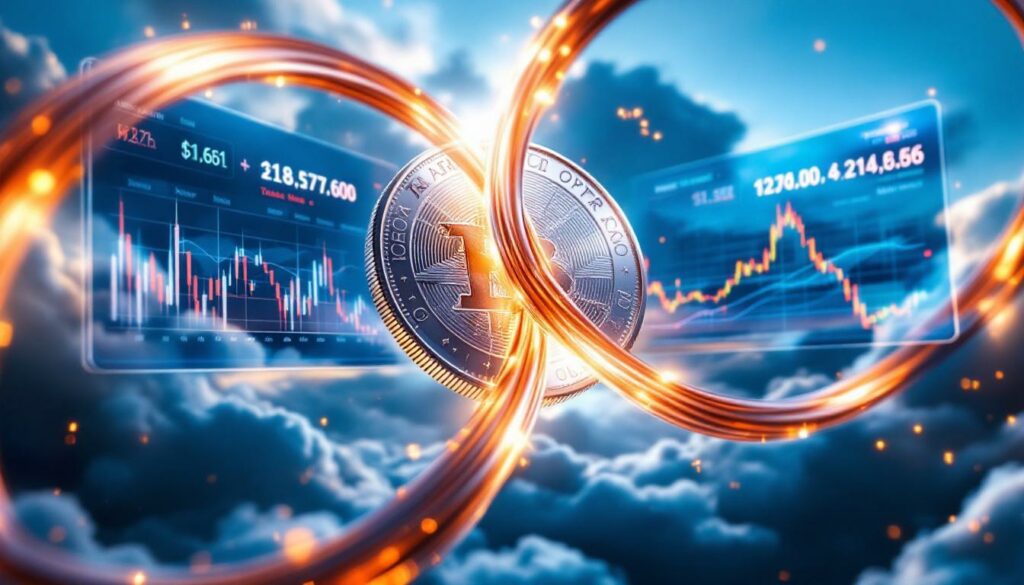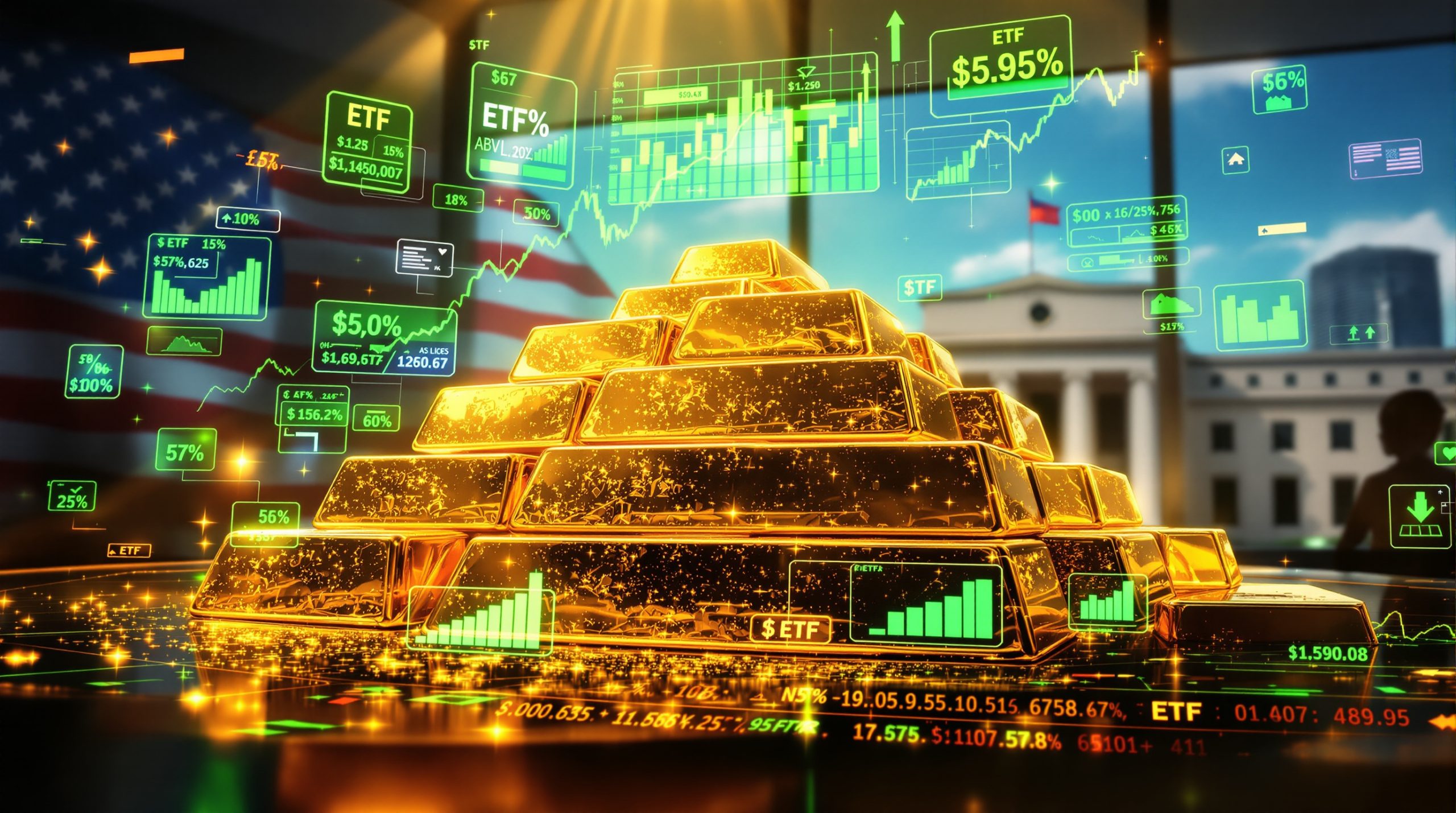The Silver-Copper Relationship: Understanding Market Dynamics and Supply Chain Connections
The intricate relationship between silver and copper markets creates a fascinating dynamic that impacts investors, manufacturers, and the broader economy. With recent tariffs impact on markets and market volatility, understanding these connections has never been more crucial for those navigating precious and industrial metal investments.
How Do Copper Tariffs Impact Silver Markets?
The Byproduct Connection Between Copper and Silver
Silver's availability is heavily dependent on other metal mining operations, with approximately 70-80% of global silver supply coming as a byproduct. This fundamental reality creates an inherent vulnerability in silver supply chains that many investors overlook. Copper mining specifically accounts for 20-25% of the world's copper supply forecast, creating a significant interdependency between these two metals.
"When you understand that only a small fraction of silver comes from primary silver mines, you begin to see how disruptions in base metal mining inevitably affect precious metal availability." — Mining industry analyst
This interconnection means that policy decisions targeting copper inevitably ripple through to silver markets, often with unexpected consequences for pricing and availability.
Understanding the 50% Copper Tariff Impact
The recent implementation of 50% tariffs on copper imports has sent shockwaves through metal markets. While tariffs might appear beneficial for domestic mining operations at first glance, the economic reality is more complex and nuanced:
- Tariffs function as taxes on domestic consumers and importers
- They don't directly enhance mining company profits
- They don't necessarily incentivize increased production
- Higher copper prices typically reduce demand across copper-intensive sectors
As Przemyslaw Radomski of Sunshine Profits notes, "Tariffs function as a tax on domestic consumers and importers, not a direct profit enhancement for mining companies, so it's not an encouragement to increase production."
Long-Term Supply Chain Implications
When copper becomes 50% more expensive for U.S. industrial users, several market effects cascade through the supply chain:
| Market Effect | Consequence for Silver |
|---|---|
| Reduced copper demand | Lower copper production |
| Decreased mining activity | Reduced silver byproduct |
| Supply constraints | Upward price pressure |
| Manufacturing slowdowns | Potential industrial demand reduction |
This creates a potentially bullish long-term scenario for silver as supply constraints develop, though timing remains uncertain. The mechanism works through a domino effect: higher copper price predictions reduce industrial demand, leading to lower copper production, which then constrains silver byproduct supply, creating upward pressure on silver prices.
Is Silver's Current Rally Sustainable?
Technical Analysis of Silver's Recent Performance
Silver has recently demonstrated impressive technical indicators, including:
- Verification of breakout above previous resistance levels
- Strong upward momentum with growing volume
- Price reaching $39.005 per ounce, the highest level since 2011
- Potential targets at $44.20 or even $50 if bullish momentum continues
The price action suggests a significant technical breakout that has caught the attention of momentum traders and technical analysts alike. The 3.61% daily gain reflects growing enthusiasm for the metal's prospects.
Historical Parallels and Warning Signs
Despite the positive technical picture, several factors suggest caution for silver investors:
- Silver has a well-documented history of producing false breakouts
- Gold isn't showing similar breakout strength (only +0.96% versus silver's +3.61%)
- Current timing aligns suspiciously with the 2008 market top pattern
- The USD Index has confirmed its breakout above resistance
- Mining stocks are showing weakness despite metal price strength
These divergences often function as early warning signals for precious metals traders. As noted in the silver-copper connection analysis, "The timing is suspiciously aligned with the 2008 top," suggesting potential vulnerability in the current rally.
Market Sentiment vs. Fundamental Factors
The current stock market performance makes industrial metals' strong showing more plausible in the short term. However, this doesn't guarantee that silver's rally will be sustainable over the longer horizon.
The disconnect between metal prices and mining stock performance often serves as an early warning signal. When mining companies—which have deep insight into production costs and future supply—don't participate in a metal price rally, it suggests professional skepticism about sustainability.
What External Factors Are Driving Silver Prices?
Global Economic Uncertainty
The implementation of new tariffs has created significant market uncertainty, which typically benefits precious metals as safe-haven assets. Silver's dual nature as both industrial and precious metal makes it particularly responsive to:
- Trade tensions between major economies
- Supply chain disruptions affecting manufacturing
- Currency fluctuations impacting import costs
- Inflation concerns driving investment demand
This unique position at the intersection of industrial necessity and wealth preservation gives silver distinctive market dynamics compared to other metals.
The US Dollar Index Relationship
The USD Index stands firm despite increasing tariff-related uncertainty, suggesting potential strength ahead. Historically, a strong dollar creates headwinds for precious metals, including silver. The current technical setup shows:
- USD Index confirming breakout above declining resistance
- Potential for further dollar strength in coming months
- Negative correlation with silver prices (typically)
This relationship creates a significant counterforce to silver's rally, as dollar-denominated commodities often struggle when the greenback strengthens.
Industrial Demand Considerations
Silver's industrial applications in electronics, solar panels, and other manufacturing sectors make it sensitive to economic growth projections. Current market conditions show:
- Continued robust demand from the renewable energy sector (solar panels)
- Potential disruptions from manufacturing slowdowns in tariff-affected industries
- Competing forces between industrial demand and investment appeal
The renewable energy transition provides a structural support for silver demand, with each solar panel requiring approximately 20 grams of silver. However, manufacturing slowdowns could temporarily offset this demand driver.
How Does Silver Compare to Other Precious Metals?
Silver vs. Gold Performance
While silver has shown impressive recent gains (+3.61%), gold hasn't demonstrated the same breakout strength (+0.96%). This divergence is unusual and potentially concerning for silver bulls, as gold typically leads precious metals trends. Key observations include:
- Silver outperforming gold in percentage terms
- Gold lacking similar technical breakouts above resistance
- Historical precedent suggesting caution when metals diverge
The gold-silver analysis ratio, which measures how many ounces of silver it takes to buy one ounce of gold, remains a crucial indicator for relative valuation between these metals.
Platinum and Palladium Comparisons
Other precious metals show similar patterns to silver's recent performance:
- Platinum demonstrated a June surge similar to silver's rally, up 3.85%
- Palladium has shown significant volatility with a 6.78% increase
- These parallel movements across industrial precious metals suggest broader market forces at work
The common thread appears to be industrial application sensitivity, as all three metals (silver, platinum, palladium) have significant industrial usage compared to gold's primarily monetary and jewelry applications.
Investment Implications
For investors considering precious metals exposure, the current market presents a complex picture:
- Silver shows potential for significant price appreciation based on technical momentum
- Historical patterns suggest caution about sustainability when diverging from gold
- Diversification across precious metals may be prudent given conflicting signals
- Mining stocks' weakness indicates potential market skepticism about long-term trends
The risk-reward balance suggests cautious positioning rather than all-in commitment to the silver rally.
What Is the "Silver Thursday" Reference?
Historical Context of Silver Thursday
The term "Silver Thursday" refers to a significant historical event in silver markets that occurred on March 27, 1980, when:
- The Hunt brothers' attempt to corner the silver market collapsed
- Silver prices plummeted dramatically in a single trading session
- The market experienced unprecedented volatility
- Many investors faced catastrophic losses almost overnight
This watershed moment in silver market history demonstrated how quickly sentiment can shift in relatively thin markets, leading to dramatic price movements.
Modern Market Parallels
The article's reference to a potential "Silver Thursday" occurring "any day now" suggests concern about:
- A possible sharp reversal in silver prices after the recent rally
- Market vulnerability to sudden sentiment shifts
- Historical patterns potentially repeating in current conditions
- The danger of chasing momentum in volatile markets
This warning comes from recognition that silver markets can turn rapidly when overextended, particularly when technical divergences appear.
Warning Signs to Monitor
Investors concerned about a potential silver market reversal should watch for:
- Continued divergence between silver prices and mining stocks
- Technical resistance levels near previous major tops
- Strengthening USD Index as a counterforce
- Changes in industrial demand forecasts, particularly in renewable energy
- Institutional positioning in futures markets showing excessive speculation
These indicators often provide early warning of changing market dynamics before price reversals manifest.
How Might Silver Markets Evolve in the Near Future?
Short-Term Price Projections
Based on technical analysis and current market conditions, silver prices could:
- Continue rallying toward $44.20 or even $50 if bullish momentum persists
- Experience a sharp reversal if technical resistance holds
- Consolidate at current levels while awaiting clearer economic signals
- React strongly to changes in tariff policies or implementation timelines
The technical target of $44.20 represents a significant milestone that would confirm the strength of the current breakout.
Long-Term Supply-Demand Outlook
The fundamental picture for silver includes several key factors that will shape markets beyond short-term volatility:
- Potential supply constraints from reduced copper mining activity
- Ongoing industrial demand from electronics and renewable energy sectors
- Investment demand driven by economic uncertainty and inflation concerns
- Mining production challenges and increasing extraction costs in aging mines
The copper tariff situation creates particular uncertainty for future silver supply, as the production linkage means copper mining decisions will inevitably impact silver availability.
Investment Strategy Considerations
Investors interested in silver exposure should consider:
- The metal's historical volatility compared to gold (approximately 1.5x more volatile)
- The potential disconnect between metal prices and mining stocks
- Diversification across different forms of silver exposure (physical, ETFs, miners)
- Timing strategies that acknowledge silver's tendency for false breakouts
A balanced approach might include core positions in physical silver supplemented by tactical positions in mining stocks or ETFs when market conditions favor them.
FAQ: Common Questions About Silver Markets
How does silver production relate to copper mining?
Approximately 20-25% of global silver production comes from copper mining operations. When copper mining decreases due to economic factors like tariffs or reduced demand, silver supply is directly affected, potentially creating upward price pressure. Most silver is extracted as a byproduct rather than from primary silver mines, making its supply sensitive to decisions made based on primary metals like copper, lead, and zinc.
What causes silver's price volatility?
Silver experiences greater price volatility than gold due to its smaller market size (approximately 1/10th the market capitalization), dual role as both industrial and precious metal, and historical susceptibility to market manipulation attempts. This makes silver price movements more dramatic in both directions compared to gold.
Why do mining stocks sometimes diverge from metal prices?
Mining companies face operational costs, regulatory challenges, and geopolitical risks that can affect their profitability regardless of metal prices. Additionally, the market often prices mining stocks based on expectations of future metal prices rather than current spot prices. When experienced mining executives don't believe a price rally is sustainable, their companies' stock prices may not follow the metal higher.
How might tariffs affect domestic silver production?
While tariffs on imported metals might appear beneficial for domestic producers, the economic reality is more complex. Reduced industrial demand and manufacturing slowdowns can offset any potential benefits, creating uncertain outcomes for domestic silver production. Additionally, since most domestic silver comes as a byproduct, decisions about production are primarily driven by the economics of the main metal being mined, not silver itself.
What historical lessons should silver investors remember?
Silver markets have experienced several dramatic boom-and-bust cycles, including the Hunt brothers' corner attempt in 1980 and the 2011 price spike to nearly $50 per ounce. These historical episodes demonstrate silver's potential for both dramatic rallies and sharp corrections. The traditional anniversary gifts often include silver, but the Silver Thursday event of March 27, 1980, remains a cautionary tale about excessive speculation in relatively thin markets.
Further Exploration
Readers interested in learning more about the silver-copper connection and its historical significance can explore educational content covering the key anniversary of Silver Thursday and how similar market dynamics might play out in today's environment. Understanding this relationship provides valuable context for both precious metals investors and those following gold-copper exploration and industrial metal markets affected by recent tariff policies.
Want to Spot the Next Major Mineral Discovery?
Stay one step ahead of the market with Discovery Alert's proprietary Discovery IQ model, which instantly notifies investors of significant ASX mineral discoveries, turning complex data into actionable insights. Explore how past discoveries have led to substantial returns by visiting our dedicated discoveries page and begin your 30-day free trial today.




